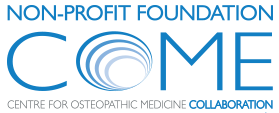State of affairs of osteopathy in the Benelux: Benelux Osteosurvey 2013
Objectives
The Commission for Osteopathic Research, Practice and Promotion (CORPP) and the Stichting Wetenschappelijk Osteopathisch Onderzoek (SWOO) identified the need to gather data about the practice profile of osteopaths in Belgium, the Netherlands and Luxembourg (together called the Benelux), to obtain actual figures regarding the profession to guide strategic planning concerning its promotion and future research projects.
Methods
All Benelux osteopaths who could be contacted (n=2,050) were invited to complete an online questionnaire survey between December 20, 2012 and March 26, 2013. Descriptive and inferential statistics were used to analyse the data; specific research questions were tested using linear regression and proportional odds models. Results from previous national and international surveys of specific groups in the osteopathic profession were used for comparative analysis.
Results
The response rate was 52.15% (n=1,069). Almost one third of the respondents were female. The mean time since graduation was 11 years. The vast majority of respondents were self-employed and in private practice (91.94%, n=935); one third worked in a group practice (33.82%, n=344). They consult an average of 9 patients a day (37.7 patients a week) and the majority spend between 46 and 60 minutes with a new patient (50.51%, n=498) and between 30 and 45 minutes with a returning patient (64.20%, n=633). Practice working hours are on average 29.7 per week. The most commonly used diagnostic techniques are: inspection, palpation of position/structure and of movement. Only 2.43% (n=24) of the respondents do not make a diagnosis with every consultation and the vast majority formulate a differential diagnosis before deciding to treat a patient (90.06%, n=888). The most commonly used treatment techniques are: visceral manipulation, neuro- and viscerocranial techniques and general osteopathic mobilisations. Most common complaints by body region estimated by the respondents were the lumbar spine, cervical spine and pelvis. Respondents also estimated that patients were mostly self-referred.
Conclusions
The results provide a benchmark for some aspects of osteopathic service delivery, which may inform potential purchasers of healthcare services; they also provide a baseline for estimating growth and scope of practice in the Benelux. Further research is required to enhance the validity of information about reported about patients.







